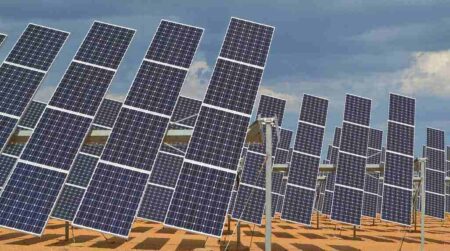|
Getting your Trinity Audio player ready...
|

The Clean Energy Plan of the Cook County government is set to reach 100% renewable electricity for its 171 county buildings by 2030.
However, the county government cannot hit this target alone. County officials are now on the market for a powerful partner. The county’s current and future on-site solar panel installations, including panels installed on the Domestic Violence Courthouse, do not produce enough juice.
County officials announced they had submitted a proposal request for a renewable energy off-site power purchase agreement (PPA).
Moving Homes From Gas To Clean Electricity
Chicago is headed into another brutal winter which begs the difficult question about the energy system to meet the needs of its people. Families were struggling to keep up with the expensive gas heating bills even before COVID-19. Then, thousands of jobs evaporated during the pandemic, and families sank deeper into the red. Now, the natural gas prices are going through the roof.
One in five Chicago households is 30 days behind on their utility bills. The number is over 50% on the south and west sides neighborhoods with an average unpaid balance of $734. Research shows that this amount is impossible for many low-income families to pay. Unfortunately, now that the Illinois moratorium against shutting off utilities has ended, there is concern that households could be without heat this winter.

With so many Chicago families unable to pay the energy to heat their homes this winter, it is evident the energy system is broken. It is about time for the city government to re-examine the policies about the energy system.
While the city invests in utility assistance programs on an unprecedented scale, it must also go beyond measures that address the root cause of the affordability crisis that is burdening so many families.
People advocate for city leaders at the Citizens Utility Board to contemplate a new way of heating their homes using clean energy. Recent analysis shows that transitioning buildings and homes from gas to electric heat is a cost-effective pathway to fix the broken energy system.
Using clean energy will save Chicago households up to $47,000 and increase citywide savings by $29 billion over the next 34 years.
Factors That Are Pushing Up Costs
The volatility of natural gas prices is pushing up costs. Price spikes are part of the business model of fossil fuels, including natural gas. This winter, gas prices in the Midwest are projected to increase up to 47%, raising total gas bills by an average of $262.
The second factor is the sizable maintenance of the network of pipelines that deliver gas to Chicago households. The Peoples Gas massive pipeline replacement program that started in 2011 cost $2.6 billion. The project is far from complete and will continue until 2040, costing as much as $11 billion. When the project is completed, customers could be paying $750 a year for the program alone, and the total cost per customer could reach $16,000.
Chicago’s multi-billion-dollar infrastructure investment comes as the city transitions to clean energy. Various studies revealed that relying on gas to heat homes is unsuitable.
Should This Money Be Invested in the Transition Away From Fossil Fuels Instead?
For a clean energy future, Mayor Lori Lightfoot should fund two to three scalability and pilot programs as a roadmap for transitioning buildings and homes to clean energy. The Environmental Defense Fund, CUB, and the Accelerate Group have submitted a Better Heat proposal to the city for a geothermal infrastructure clean energy technology in targeted neighborhoods.
City leaders must put Chicago on a path to a more affordable and healthier clean energy future.
Written by Janet Grace Ortigas
Edited by Cathy Milne-Ware
Sources:
Chicago Sun-Times: Moving homes from gas to clean electricity can fix Chicago’s broken energy system; by Dave Kolata
News WTTW: Cook County Government in the Market for a Power Player as It Aims for 100% Renewable Energy Goal; by Patty Wetli
Featured and Top Image Courtesy of Dru!’s Flickr Page – Creative Commons License
Inset Image Courtesy of James Moran’s Flickr Page – Creative Commons License



